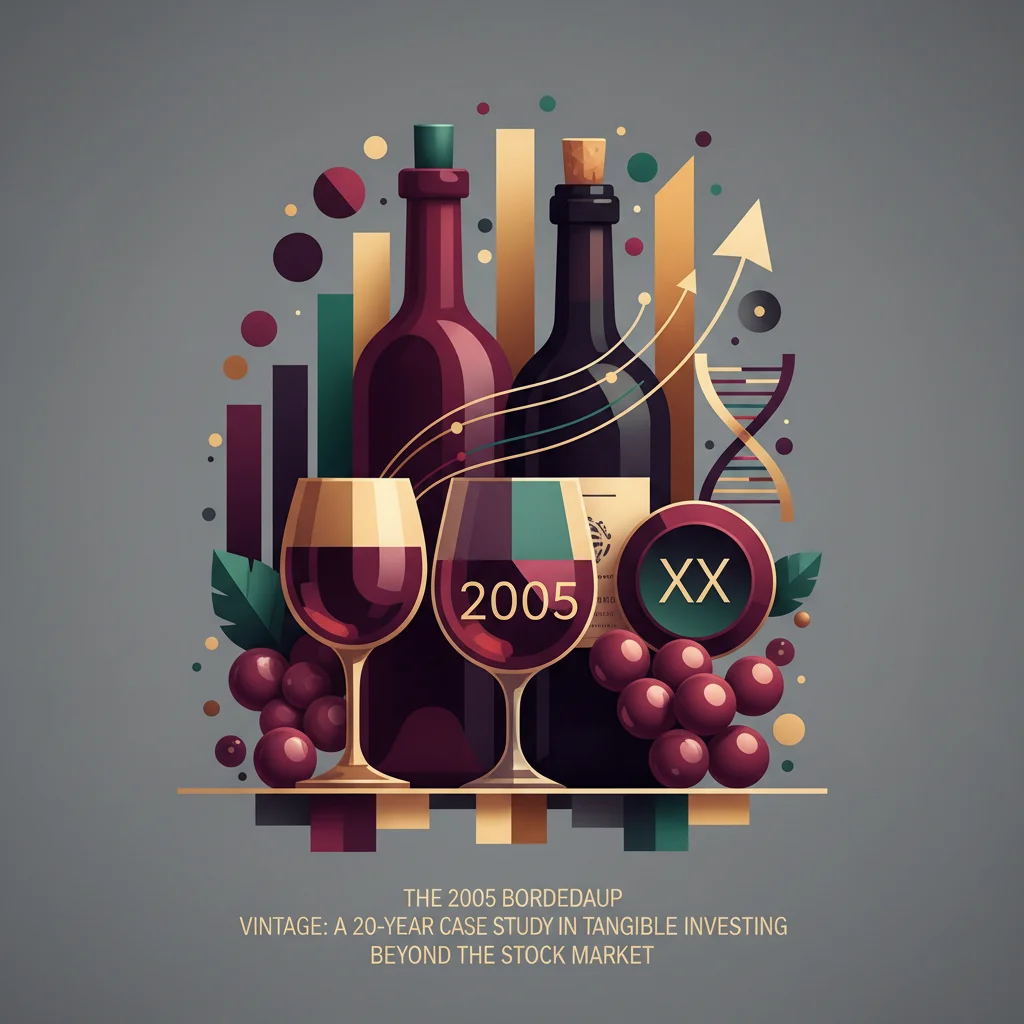
The 2005 Bordeaux Vintage: A 20-Year Case Study in Tangible Asset Investing
The Anatomy of a Blue-Chip Investment: Beyond the Stock Market
In the world of finance and investing, portfolios are often dominated by stocks, bonds, and digital assets. We track the fluctuations of the stock market with hawk-like intensity, guided by algorithms and the relentless 24/7 news cycle. Yet, beyond the tickers and terminals lies a world of tangible assets that offer a different kind of value proposition—one rooted in scarcity, craftsmanship, and time. Fine wine, particularly from legendary vintages, stands as a premier example of such an investment. Today, we uncork the story of one of the most celebrated vintages of the modern era: the 2005 Bordeaux.
Two decades ago, the 2005 vintage was met with a level of hype rarely seen, even in the storied vineyards of Bordeaux. It was declared a “vintage of a lifetime,” a perfect storm of climatic conditions that produced wines of extraordinary power, structure, and aging potential. For investors, this was the equivalent of a blue-chip IPO with can’t-miss potential. But as any seasoned professional in economics knows, hype doesn’t always translate to long-term performance. Now, 20 years on, the question looms: Did the 2005 Bordeaux deliver on its promise? And what lessons can it teach the modern investor about patience, value, and the unique dynamics of tangible assets in a rapidly evolving global economy?
From Vineyard Hype to Market Reality: The “En Primeur” Frenzy
To understand the 2005 vintage, one must first understand the en primeur system—a form of wine futures. This is where investors buy wine while it is still aging in the barrel, two years before it’s bottled and released. The en primeur campaign for the 2005s was electric. Critics, like the influential Robert Parker, bestowed near-perfect scores across the board, fueling a speculative frenzy. Prices soared, with some châteaux releasing their wines at record highs. According to a retrospective by the Financial Times, the excitement was palpable, drawing in not just connoisseurs but a new wave of global investors looking to diversify their portfolios.
This initial surge mirrored the fervor of a hot tech stock debut. The narrative was compelling, the expert ratings were stellar, and the fear of missing out was intense. However, unlike a stock, which can be bought and sold in milliseconds through sophisticated trading platforms, this asset required a fundamentally different mindset. The 2005s were built for the long haul. They were tannic, powerful, and structurally immense—wines that demanded a decade or more of cellaring before they would even begin to reveal their true character. This created a fascinating dynamic: an asset purchased in a moment of peak market excitement that required extreme patience to realize its value.
The 20-Year Verdict: A Performance Review
So, after two decades of quiet maturation, how have these celebrated wines—and the investments they represent—fared? The results are a masterclass in the complexities of the fine wine market. While the vintage as a whole has performed admirably, the returns have not been uniform. Just as in the stock market, where blue-chips, mid-caps, and speculative stocks perform differently, the châteaux of Bordeaux have followed distinct paths.
The top-tier “First Growths” and their equivalents (like Château Lafite Rothschild, Château Margaux, and Petrus) have, for the most part, delivered exceptional returns, justifying their high entry prices. Their global brand recognition and scarcity act as a powerful economic moat. However, many of the second, third, and fourth-tier châteaux, which also commanded high prices in the initial frenzy, have seen more modest growth. Some have barely outpaced inflation, proving that in wine investing, as in all investing, brand and provenance are paramount.
The table below offers a snapshot of the journey for a few representative wines from the 2005 vintage, illustrating the varied outcomes. Prices are approximate and represent a general market trajectory.
| Château | Tier / Classification | Approx. 2006 Release Price (per bottle) | Approx. 2024 Market Price (per bottle) | Maturity & Performance Note |
|---|---|---|---|---|
| Château Lafite Rothschild | First Growth | $600 | $1,5
|


